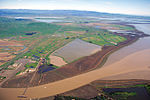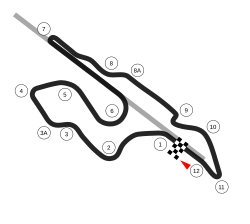Tubbs Island
Islands of Northern CaliforniaIslands of Sonoma County, CaliforniaSan Pablo BaySonoma County, California geography stubsUse mdy dates from December 2021

Tubbs Island is an island in San Pablo Bay (an embayment of San Francisco Bay). It is in Sonoma County, California, and parts of it are managed as part of the Napa-Sonoma Marshes Wildlife Area. Its coordinates are 38°08′59″N 122°25′27″W, and the United States Geological Survey measured its elevation as 0 ft (0 m) in 1981. It, long with Island No. 1, Island No. 2 and Green Island, are labeled on a 1902 USGS map of the area.
Excerpt from the Wikipedia article Tubbs Island (License: CC BY-SA 3.0, Authors, Images).Tubbs Island
Noble Road,
Geographical coordinates (GPS) Address Nearby Places Show on map
Geographical coordinates (GPS)
| Latitude | Longitude |
|---|---|
| N 38.149722222222 ° | E -122.42416666667 ° |
Address
Noble Road
Noble Road
California, United States
Open on Google Maps





